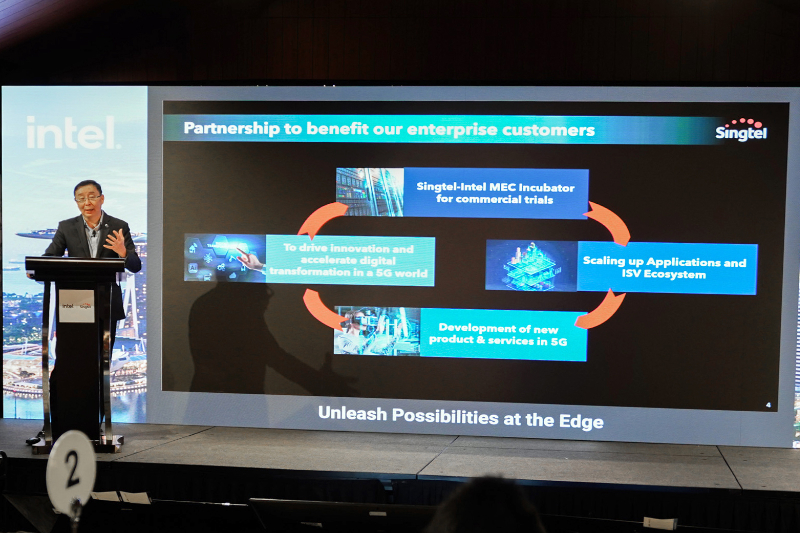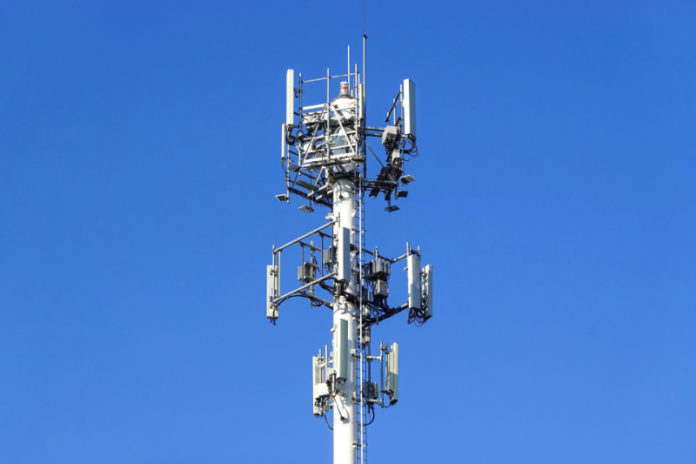With the promise of low latency and increased data throughput, 5G is poised to take enterprises to new heights. Even now, verticals are experimenting with new products and services that will leverage what 5G has to offer.
By 2027, 5G mobile subscriptions in Southeast Asia and Oceania are expected to reach more than 4.4 billion, overtaking 4G.
Realising this, businesses are quick on their feet to lead the 5G race. Singtel and Intel, in particular, have teamed up to launch a 5G multi-access edge compute (MEC) incubator, offering enterprises use of both companies’ ecosystems, to deliver their 5G use cases.
“Most enterprises are constantly looking for solutions that will help them to be more productive, cost effective, and increasingly more sustainable. They spend a lot of time finding the right application or devices that can meet expectations,” observed Bill Chang, CEO for Group Enterprise and Regional Data Center Business, Singtel, during the 5G MEC incubator launch in Singapore.

Growing the ecosystem
The Singtel and Intel collaboration will focus on developing applications and ecosystems to enable consumer use cases such as cloud gaming, high-definition content delivery, video analytics, AR/VR, and metaverse.
Powering the MEC incubator workstations are Intel’s 4th Generation Xeon Scalable processors and Intel Data Center GPU, codenamed Ponte Vecchio, and Singtel’s Paragon, an orchestration platform for 5G edge computing and cloud services.
“We’re giving an opportunity to customers to elaborate, test their ideas, (and) get expert advice from an ecosystem, working with them on solutions that will help them use 5G and edge, to solve problems that they simply couldn’t solve in the past,” said Christoph Schell, Executive Vice President and Chief Commercial Officer, Intel.
Upon launch, Singtel and Intel presented four ecosystem use cases across different verticals.
The first one, a content delivery solution, demonstrated up to 46% reduction in load time for videos when using the 5G edge MEC, compared to 4G on public cloud.
Meanwhile, Ipsotek developed VISuite AI — its video analytics AI platform — using Singtel’s 5G network and Paragon, Intel Xeon platforms for edge, and Axis analytics. VISuite AI converts video data into actionable intelligence to provide real-time situational awareness, and enables users to manage automatically generated alarms at their worksites.
As an example, VISuite AI can detect workers at risk, such as when they are not wearing personal protective equipment.
Aside from worker and public safety, device safety is one area that is equally important, noted Manoj Prasanna Kumar, Head of Technology for 5G/IoT, Singtel.
“There is a whole cyber world where there are software and cyber challenges to devices. But we also don’t want to ignore the physical safety of devices. Today, we are going to show you how the edge can make the devices take care of themselves. We’re going to show you how the cameras can take care of themselves,” he said.
During a demonstration, Axis Communications showed that when someone tries to cover the lens of a CCTV camera, for example, a strobe light gets activated. Likewise, when tampering is attempted, an alarm goes off.
Next, HTC created a 5G real-time mixed reality solution that integrates 5G, VR, and 3D virtualisation. It uses HTC’s mixed reality solution and private network, with Singtel’s 5G network and Paragon, and lets users collaborate with real-time data streaming to support different verticals for workspace collaboration.
Likewise, HTC also developed private network solutions that leverage Intel FlexRAN.
Then, Quanta utilised Intel’s ecosystem to develop a liquid cooling system that is said to enhance performance, lower CPU temperature by 11.8°C, and improve power savings. The solution is now being trialled at Singtel edge sites.
“We’re (working) together with our ecosystem partners, who will explore new product offerings like edge accelerator content delivery, cloud gaming, and mixed reality for enterprises. Our joint ecosystem development programs will engage many app developers, independent software vendors, (as well as) solution and system integrators to create even more offerings for enterprise customers,” Chang said.
Towards Industry 4.0
With the demonstrated use cases, Intel’s Christoph Schell banked on 5G making a huge splash on Industry 4.0, paving the way for more efficient project planning.

“Could we use this technology in the mining industry to map out mines underground with private networks? Of course, we can. Think about how you could use that in city planning for a sewage system, (and) how you could plan it on a digital twin before you build. The opportunities are phenomenal, and (so are) the amount of costs that we (can) take out, the positive impact we have on sustainability— just because we can plan ahead,” he remarked.
For the MEC incubator, Schell emphasised the importance of flexibility, which allows businesses to choose depending on their needs and capabilities.
“From a customer point of view, you have a lot of enterprises who are not keen to work with cloud solutions. They want to control the network; they want to control where the data sits. Having edge solutions, sometimes even on-premises solutions and private networks, is fundamental for many, many industries. Many of these companies will not consider cloud solutions,” he said.
“There are also customers that may not want to put the workloads in a public cloud kind of operator, even at the edge. So, this provides a sort of an in-country deployment that meets some of these needs, depending on those customers’ data,” Singtel’s Bill Chang added.
Chang believes that no customers will buy 5G just because carriers are producing 5G, unless customers are made to understand this technology’s power, and why it’s important.
“That’s why we’re on this journey. When we are able to do that, to understand that, and unlock the value of 5G, more and more customers will come. And we’re starting to see that accelerate,” the Singtel executive concluded.
















